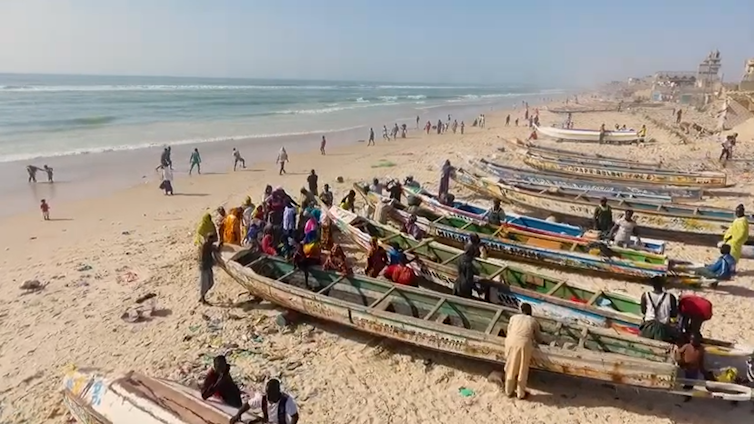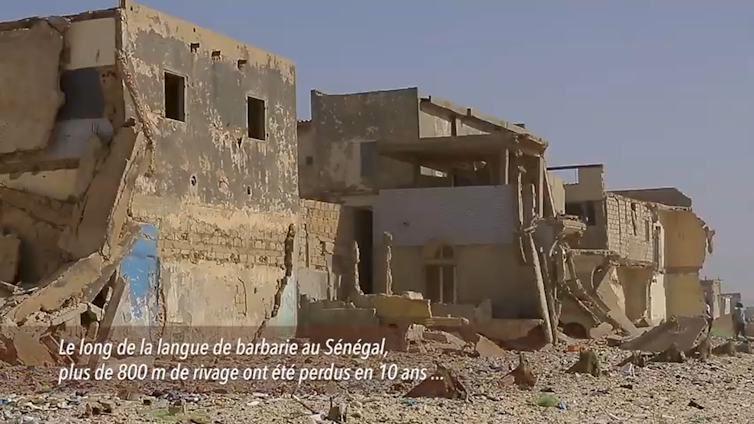Interdisciplinary approaches to coastal vulnerability: the pathway to coastal sustainability
By Olusegun Dada, Frédéric Ménard, Pierre Morand, Rafael Almar
Around the world, fragile coastal ecosystems are under intense pressure from unrelenting human activity, gradual yet relentless climate trends and extreme weather events. Understanding and managing their complex and sometimes catastrophic interactions requires an integrated and interdisciplinary approach. In this article, we articulate the plausible future reciprocal relationship between the natural and social subsystems within the coastal systems and how to manage these changes via adaptive and inclusive approaches.
Using a press-pulse dynamics conceptual framework, we build in variables such as population growth, economic development, governance quality, technological change, and infrastructural development. The result is three future scenarios for coastal areas undergoing major ecosystem structures and functions alterations.
- Anthropocentric: Under this human-centred scenario, current trends continue along the coast, with rising population, economic activities and infrastructural development, and weak governance and poor policy implementation.
- Anthro-ecocentric: This scenario is characterised by increasing population, infrastructural and economic development, significant advancement in technology, but also a modest improvement in environmental quality as a result of good governance.
- Ecocentric: This environment-centred scenario is characterised by government incentives for conservation, green energy, and land-use planning.
The three scenarios are all based on the worst-case climatic conditions for the future as predicted by the IPCC report, RCP 8.5.

Our findings
We applied our conceptual model to West Africa coastal areas. Currently, strong economic activities and urbanisation cluster along the coastline, generating multifaceted pressures on resources, acute tensions among users, ecosystems and marine resources degradation and the vulnerability of coastal areas. Coastal degradation manifests by way of fisheries depletion, pollution, flooding and coastal erosion.
1. “Anthropocentric” scenario
Here, current trends continue along the coast, with rising population, economic activities and infrastructural development, and weak governance and poor policy implementation. Major developments like new ports development and expansion, resource exploitation, unregulated groundwater extraction, urban expansion, upriver damming, and other projects, are implemented without environmental and social impact assessment.
Under this scenario, there would be a huge decline in the key ecological goods and services functions. Continuing exploitation of coastal resources leads to floods and aggravated coastal erosion, the greater vulnerability of floras and faunas, and the degradation and destruction of their habitats. Without adaptation, sea level rise (SLR) and more intense and frequent extreme sea-level events, combined with trends in coastal development amplify expected annual flood damages.
Coastal protection systems in urban cities and densely populated regions would reduce expected damages and be relatively cost-efficient, but would be unaffordable for rural and poorer areas, leaving them vulnerable. Coastal processes and associated land-use changes would be “business as usual”, creating a high risk of and vulnerability to flooding, erosion and pollution for poor and unprotected populations.

2. “Anthro-ecocentric” scenario
The global context for this scenario would be the same as the previous one. Here, the general approach to ecosystem services is reactive rather than proactive. Coastal-protection structures like sea walls, surge barriers and embankments are widespread, providing safety in many West African coastal cities and deltas. While these structures protect economic development, they will have a negative impact on economic interests and human health and well-being that rely on ecological goods. These include ecotourism, recreation and fisheries, clean air and fresh water. Also negatively affected are ecological services such as air and water purification, biodiversity maintenance, waste decomposition, soil and vegetation generation and renewal, groundwater recharge, greenhouse gas mitigation, and aesthetically landscapes.
Under this scenario, coastal-protection structures are prioritised in areas with higher socioeconomic values. Poorer areas with lower socioeconomic values receive less protection, leading to inequality, and this could increase political and social tensions. As sea levels continue to rise, the height of coastal-protection structures is increased, yet this may ultimately prove to be unaffordable and ineffective. Even with well-designed structures, the risk of possibly catastrophic effects in the event of their failure cannot be ruled out.
While hard structures along the coast may serve to protect urban areas, they can result in a significantly larger proportion of the ecosystems being lost. This may in turn leave communities vulnerable to adverse events such as floods, ocean surges, pollution, coastal eutrophication and saline intrusion. In the context of ongoing climate change, some of these may surpass a crucial threshold, overwhelming social capacity, and, consequently, affect human well-being.
3. “Ecocentric” coastal scenario
Under this environmentally focused scenario, government efforts are focused on encouraging environmental conservation, green energy, and effective land-use planning. Ecosystem-based policies are strengthened, ecotourism principles are supported, and environmental laws and regulations are enacted and adhered to. More confidence is placed on the development of environmental engineering, climate and energy-friendly technology, and new ways of farming that incorporate provisioning with regulating and cultural ecosystem services. The pace of population growth and economic development is wholly determined by environmental quality.
As with the prior scenarios, there will be sea-level rise driven by climate change, with the storms and extreme wave events that can increase coastal hazards. However, because the natural coastal systems are not passive, there are numerous threshold effects – they respond by adapting to the new configurations. Further, restoration of coastal ecosystems such as mangroves or tidal marshes – coastal “blue carbon” ecosystems – provide climate-change mitigation through increased carbon uptake and storage of around 0.5% of current global emissions annually.
Under this scenario, improved technology enhances the development of marine (blue) renewable energy production, green shipping and the protection of carbon-rich coastal ecosystems.
In light of the co-benefits for marine biodiversity and coastal livelihoods, the development of nature-based solutions in the coastal and marine environment can be seen as such no-regret option that should be given a high priority.
The way forward
What is the way forward for West African coastal areas? The upcoming IRD-UCC-World Bank policy brief couldn’t be clearer:
“Good coastal risk management for the protection and development of the human, economic and natural stakes of the coastal zones should be decided and implemented in a concerted way between the actors of the territory and coherent with the objectives of the already existing territorial public policies. Besides, the use of local knowledge of the communities, interdisciplinary scientific studies and the operational know-how of technician will promote the acceptability, efficiency and sustainability of the management solutions envisaged. Finally, a global, systemic approach to coastal management should be employed.”
This argues for a forward-looking, environmentally focused approach for managing our fragile coastal ecosystems. As indicated by our research, this approach has the greatest potential for achieving coastal sustainability.